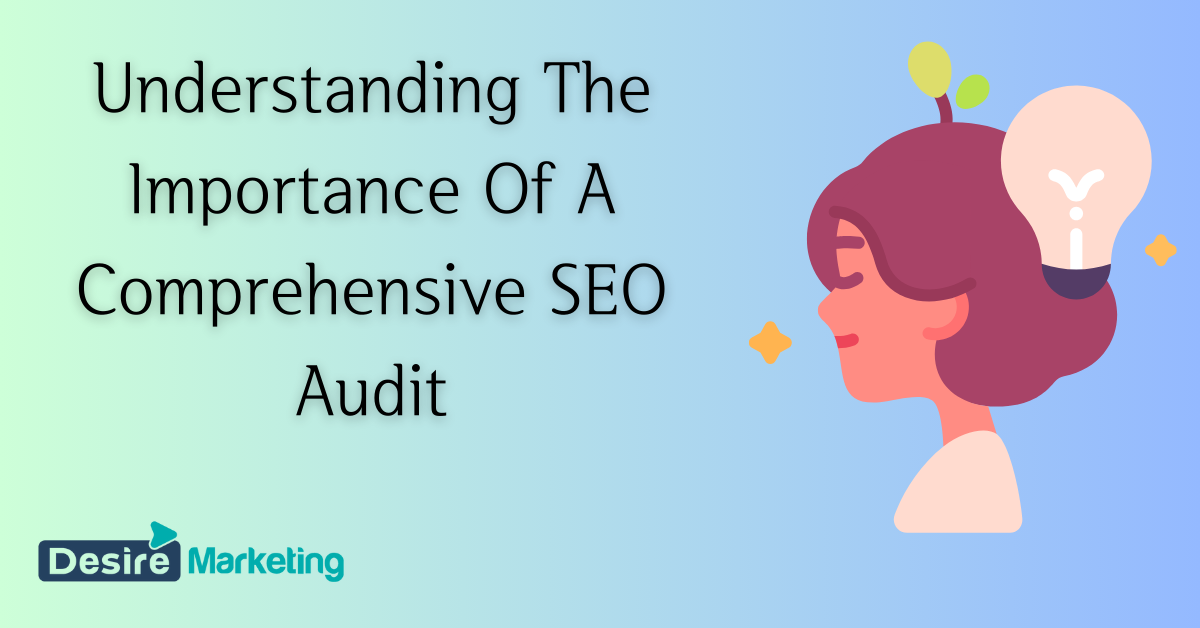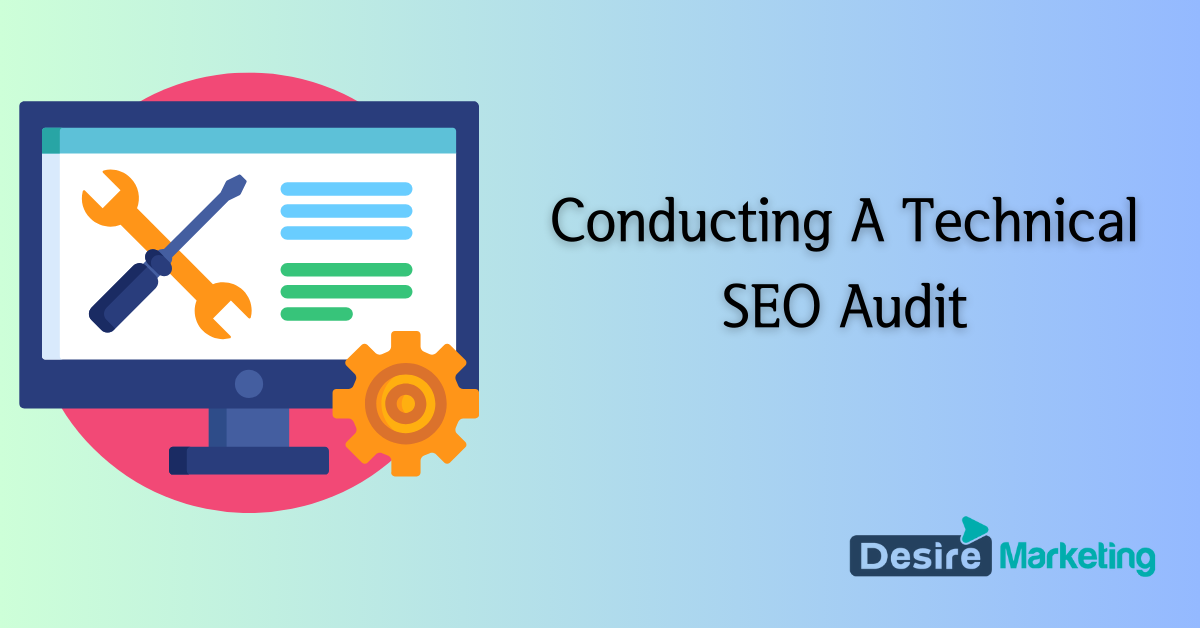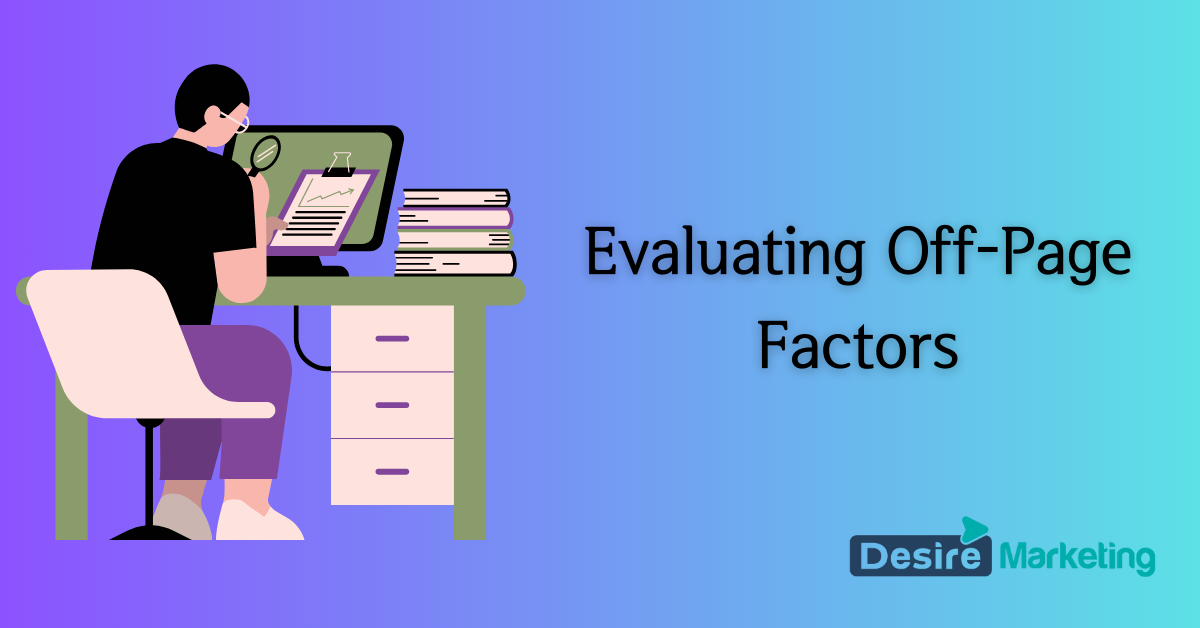To do an enterprise SEO audit, start by conducting a comprehensive website analysis to identify technical issues, on-page optimization gaps, and off-page factors affecting search performance.
What is Enterprise SEO Audit?
An enterprise SEO audit is essentially a thorough check-up for a large company’s website. It digs deep into how the website lines up with the best practices for being found and ranked by search engines.
Since big company websites are usually complex with lots of pages, the audit looks at a wide array of things. This includes how the website is built (its technical side), the quality and setup of the content on each page, how other sites link to it, and making sure it meets legal rules. The main goal is to spot where improvements can be made, helping the site show up better in search results and perform more effectively online.
The Importance Of A Comprehensive SEO Audit

Conducting an SEO audit is a crucial step in optimizing your enterprise website for search engines. It involves analyzing various aspects of your site and online presence to identify areas that can be improved to enhance visibility, drive more organic traffic, and ultimately increase conversions.
Why Conducting An SEO Audit Is Crucial For Your Enterprise
Here are some key reasons why conducting an SEO audit is crucial for your enterprise:
- Identify technical issues: An SEO audit helps identify any technical issues that may be hindering your website’s performance, such as broken links, duplicate content, slow page speed, or mobile usability problems. Addressing these issues can improve user experience and search engine visibility.
- Assess on-page optimization: By evaluating your website’s on-page elements like meta tags, headings, keyword usage, and content quality, an SEO audit can identify opportunities to optimize and improve your website’s relevance to target keywords. This optimization can boost your ranking in search engine results pages (SERPs).
- Evaluate site architecture: An audit can uncover potential issues with your site’s structure and navigation, ensuring that search engines can crawl and index your pages effectively. An optimized site architecture ensures that your content is easily discoverable by both search engines and users.
- Examine backlink profile: Backlinks are an essential aspect of SEO, and the quality and quantity of your backlinks influence your website’s authority and trustworthiness. An audit allows you to analyze your backlink profile to identify opportunities for acquiring high-quality backlinks and disavowing any harmful or spammy links.
The Benefits Of A Thorough SEO Audit
A thorough SEO audit offers several benefits for your enterprise:
- Improved search engine rankings: By addressing technical issues, optimizing on-page elements, and enhancing site architecture, an audit can help improve your website’s search engine rankings. This increased visibility can drive more organic traffic to your site and increase your chances of attracting potential customers.
- Enhanced user experience: Identifying and resolving technical issues and optimizing on-page elements contributes to a better user experience. A well-structured website that loads quickly, provides valuable content and is easy to navigate can lead to higher engagement, longer visit durations, and lower bounce rates.
- Increased conversion rates: By analyzing user behavior, conversion funnels, and website performance, an SEO audit can identify conversion barriers and areas for improvement. Optimizing these aspects can help enhance conversion rates, turning more website visitors into customers.
How A Comprehensive Audit Helps Identify Areas Of Improvement
A comprehensive SEO audit helps identify areas of improvement by:
- Gaining insights into your competitors: An audit can examine your competitors’ websites and strategies, identifying their strengths and weaknesses. This analysis helps uncover opportunities for competitive advantage and differentiation.
- Identifying keyword optimization opportunities: Analyzing your website’s keyword usage and researching relevant search terms allows you to identify gaps and opportunities for optimizing your content. This optimization can help attract more targeted traffic and improve your website’s ranking for relevant keywords.
- Pinpointing content gaps: By evaluating your website’s content, an audit can identify any gaps or areas where content can be expanded or improved. Filling these gaps with valuable and relevant content can attract more visitors and enhance your website’s authority in your industry or niche.
- Providing actionable recommendations: An SEO audit offers actionable recommendations to address identified issues. These recommendations can range from technical fixes to content optimizations, providing a roadmap for improving your website’s overall SEO performance.
By understanding the importance of a comprehensive SEO audit, you can take the necessary steps to optimize your enterprise website, improve search engine visibility, and achieve long-term success in the digital landscape.
How to Conduct an Enterprise Level Technical SEO Audit

When it comes to conducting a comprehensive SEO audit for an enterprise website, one crucial aspect that cannot be overlooked is the technical SEO analysis. This step is essential to determine the health, performance, and functionality of the website. By conducting a technical SEO audit, you can uncover any underlying issues that may be negatively impacting your website’s visibility on search engines.
In this section, we will explore the key elements to consider when conducting a technical SEO audit.
1. Assessing Website Speed And Performance:
- Page loading speed plays a significant role in user experience and search engine rankings. Slow-loading websites can lead to high bounce rates and lower organic traffic. To assess website speed and performance, consider the following:
- Run a website speed test using tools like page speed insights or gtmetrix to identify areas of improvement.
- Optimize large image files and enable browser caching to reduce server response time.
- Minimize the use of external scripts and plugins that could slow down your website.
- Aim for a fast and efficient user experience by utilizing content delivery networks (cdns) and optimizing server response time.
2. Optimizing Website Structure And Navigation:
- A well-structured and user-friendly website not only helps visitors navigate easily but also assists search engines in understanding your content. Consider the following tips to optimize your website structure and navigation:
- Ensure that your website has a logical hierarchy with clear categories and sub-categories.
- Optimize your URL structure to be descriptive and include relevant keywords.
- Implement breadcrumbs to help users navigate back to previous pages.
- Create an XML sitemap to provide search engines with a clear map of your website’s structure.
Also Read
How Much Does an SEO Audit Cost
Why SEO Audit is Important For Website
How to Create a Topical Map SEO
3. Analyzing Mobile-Friendliness And Responsiveness:
- As mobile usage continues to rise, it is crucial to ensure that your website is mobile-friendly and responsive across different devices. Consider the following when analyzing mobile-friendliness:
- Use Google’s mobile-friendly test to determine if your website meets mobile usability requirements.
- Ensure that your website’s design and content adapt seamlessly to various screen sizes.
- Optimize your images and multimedia assets for mobile devices to reduce loading times.
- Implement responsive design techniques to deliver a consistent user experience.
4. URL Structure And Redirects:
- A well-optimized URL structure can improve search engine indexing and user experience. Consider the following when addressing URL structure and redirects:
- Opt for short and keyword-rich URLs that accurately describe the content of the page.
- Use hyphens to separate words in the URL instead of underscores or spaces.
- Implement 301 redirects for any outdated or broken URLs to prevent loss of link equity.
- Regularly audit and update your internal and external links to ensure they are working correctly.
5. Crawlability Analysis:
- A crawlability analysis helps identify any issues that may hinder search engine bots from fully accessing and indexing your website. Consider the following when conducting a crawl ability analysis:
- Use tools like Google Search Console or Screaming Frog to crawl your website and identify any crawl errors or issues.
- Check for blocked resources in the robots.txt file that could prevent search engine bots from accessing important pages.
- Ensure that your XML sitemap is accurate and up to date to facilitate better crawling and indexing.
By thoroughly assessing website speed and performance, optimizing website structure and navigation, analyzing mobile-friendliness and responsiveness, addressing URL structure and redirects, and conducting a crawl ability analysis, you can ensure that your website is technically optimized for better search engine visibility.
Remember to regularly audit and update your website to stay ahead of the ever-evolving SEO landscape.
How to Conduct an Enterprise Level On-Page SEO Audit
An enterprise SEO audit is a crucial step in optimizing your website for search engines. It allows you to identify areas of improvement and develop strategies to enhance your online visibility. One of the key aspects of an audit is analyzing on-page elements to ensure they are optimized for maximum impact.
In this section, we will delve into the subheading: analyzing on-page elements, with a focus on optimizing meta tags, titles, and descriptions, evaluating keyword usage and placement, assessing heading structure and hierarchy, improving internal linking structure, and evaluating content quality and relevance.

Let’s explore each of these elements in detail:
1. Optimizing Meta Tags, Titles, And Descriptions
- Meta tags, titles, and descriptions play a crucial role in conveying the relevance of your webpage to search engines. Here’s what you need to consider:
- Craft unique and descriptive meta tags for each page, including relevant keywords and a compelling call-to-action.
- Optimize your page titles by incorporating relevant keywords that accurately represent the content.
- Write compelling meta descriptions that entice users to click on your website in search results.
2. Evaluating Keyword Usage And Placement
- Effective keyword usage and placement are essential for SEO success. Consider the following points:
- Conduct keyword research to find relevant terms and phrases that align with your target audience’s search intent.
- Incorporate keywords naturally throughout your content, including headings, subheadings, and body text.
- Avoid keyword stuffing and ensure that your content remains informative and engaging.
3. Assessing Heading Structure And Hierarchy
- A well-structured heading hierarchy not only enhances the user experience but also helps search engines understand your content better. Here’s what you should do:
- Use html heading tags (h1, h2, h3, etc.) To denote the hierarchy of your headings.
- Ensure that your main heading (h1) reflects the primary topic of the page.
- Use subheadings (h2, h3, etc.) To break up content and guide readers through the page.
4. Improving Internal Linking Structure
- A strong internal linking structure can improve user navigation and distribute authority throughout your website. Consider these points:
- Identify relevant pages and create internal links to connect them.
- Use descriptive anchor text that accurately describes the destination page.
- Avoid excessive internal linking, as it may dilute the importance of each link.
5. Evaluating Content Quality And Relevance
- High-quality and relevant content is the cornerstone of a successful SEO strategy. Here are some factors to consider:
- Create unique and original content that provides value to your target audience.
- Ensure your content aligns with the search intent of your target keywords.
- Regularly update and maintain your content to keep it fresh and relevant.
Analyzing these on-page elements is crucial for optimizing your website’s visibility in search engine results. By focusing on meta tags, titles, and descriptions, keyword usage, and placement, heading structure and hierarchy, internal linking structure, and content quality and relevance, you can take significant steps towards improving your website’s SEO performance.
So, let’s dive in and conduct a comprehensive enterprise SEO audit!
How to Conduct an Enterprise Level Off-Page SEO Audit

When conducting an enterprise SEO audit, it is crucial to assess the off-page factors that can impact your website’s visibility and rank. These factors include external links, social media presence, and online reputation. By analyzing the backlink profile and quality, identifying opportunities for link building, and assessing social media presence and engagement, you can gain valuable insights and optimize your off-page SEO strategies.
Here’s how to evaluate these off-page factors:
1. Analyzing Backlink Profile And Quality
- Examine the number of backlinks pointing to your website and analyze their quality.
- Look for relevant and authoritative websites that are linking to your content.
- Check for any spammy or low-quality backlinks that might be negatively impacting your SEO efforts.
- Investigate the anchor text diversity and ensure it is natural and varied.
- Monitor the growth and decline of your backlink profile over time.
2. Identifying Opportunities For Link Building
- Conduct competitor analysis to identify websites that link to your competitors but not to your site.
- Seek out industry-specific directories and authoritative websites where you can submit your website or content.
- Develop relationships with influencers and thought leaders who can showcase your content on their platforms.
- Explore guest blogging opportunities on reputable websites within your niche.
- Implement a consistent content marketing strategy to attract natural links from other websites.
3. Assessing Social Media Presence And Engagement
- Review your social media profiles to ensure they are optimized with accurate information and relevant keywords.
- Assess the quality and engagement of your social media followers.
- Monitor social media mentions and conversations around your brand.
- Interact with your followers by responding to comments and messages in a timely and engaging manner.
- Regularly share valuable content and encourage social sharing to improve your social media visibility.
By thoroughly evaluating these off-page factors, you can identify strengths, weaknesses, and opportunities for improvement. Incorporate the insights gained from the audit into your overall SEO strategy to boost your website’s rankings and visibility in search engine results. Remember, a well-rounded approach to off-page SEO can significantly impact your website’s success.
SEO Audit Tools
SEO audit tools are essential for evaluating the effectiveness of your website in search engine rankings and identifying areas for improvement. Here are some popular SEO audit tools, each with its own unique features:
- Google Analytics: A comprehensive tool that tracks and reports website traffic. It’s invaluable for understanding user behavior, traffic sources, and engagement metrics.
- Google Search Console: Offers insights into how Google views your site, including information about indexing status, search queries, site errors, and more. It’s particularly useful for monitoring and resolving technical SEO issues.
- Ahrefs: Known for its powerful backlink analysis capabilities, Ahrefs also offers a site audit feature that can identify technical SEO issues and provides insights into your site’s organic search traffic.
- SEMrush: Offers a suite of tools including site auditing, keyword research, and competitor analysis. It’s particularly strong in tracking keyword rankings and provides detailed reports.
- Moz Pro: Features a comprehensive site crawl that identifies SEO issues and provides actionable recommendations. It’s also known for its keyword research and link-building tools.
- Screaming Frog SEO Spider: A desktop program that crawls website URLs to audit for common SEO issues. It’s highly customizable and excellent for technical SEO audits.
- Yoast SEO: A popular WordPress plugin that helps with on-page SEO optimization, including content analysis, meta tags, and readability checks.
- Majestic SEO: Specializes in backlink analysis and also provides tools for site comparison and tracking your ranking over time.
- Ubersuggest: Offers a free tool for keyword research and site audit, which is great for beginners or small businesses on a budget.
Tracking And Analyzing SEO Performance
Measuring the success of your SEO efforts is crucial to ensure that your enterprise website is performing at its best. By tracking and analyzing various SEO metrics, you can identify opportunities for improvement and implement effective strategies to boost your organic visibility.
Here are the key points to consider when monitoring and analyzing SEO performance:
Monitoring keyword rankings:
- Regularly track the rankings of your target keywords to evaluate their performance over time.
- Identify keyword fluctuations and investigate any significant drops in rankings to detect potential issues.
- Monitor the performance of both your primary keywords and long-tail keywords to gain insights into your overall search visibility.
Analyzing organic traffic and conversion rates:
- Analyze your website’s organic traffic to understand the volume and quality of visitors coming from search engines.
- Examine conversion rates to determine the effectiveness of your SEO efforts in driving valuable actions on your website.
- Identify the top-performing landing pages and optimize them further to maximize conversion potential.
Tracking social media metrics:
- Keep an eye on social media metrics, such as the number of shares, likes, comments, and engagements on your content.
- Analyze social media referral traffic to assess the impact of your social media campaigns on organic visibility.
- Identify popular social media channels for your target audience and optimize your content accordingly.
Assessing the effectiveness of SEO strategies:
- Regularly assess the effectiveness of your SEO strategies and tactics by analyzing their impact on various metrics.
- Determine which strategies are driving the best results and adjust your approach accordingly.
- Stay updated with the latest SEO trends and algorithm changes to ensure your strategies remain effective.
Utilizing analytics tools for performance measurement:
- Take advantage of analytical tools such as Google Analytics, Ahrefs, Semrush, and Moz to collect and analyze data.
- Utilize these tools to gain insights into website traffic, user behavior, keyword rankings, and backlink profiles.
- Leverage the data to make informed decisions and optimize your SEO efforts for better performance.
By diligently tracking and analyzing SEO performance using the above methods, you can stay on top of your enterprise website’s organic visibility and continuously improve its search engine rankings. Remember, the journey to SEO success is an ongoing process that requires constant monitoring, analysis, and adaptation.
Implementing Technical SEO Recommendations
To kickstart your action plan, it’s essential to address any technical SEO issues that may be hindering your website’s performance. Here are some key points to consider:
- Conduct a thorough website crawl to identify any crawl errors, broken links, or duplicate content.
- Optimize your website’s loading speed by compressing images, minifying CSS and JavaScript files, and leveraging browser caching.
- Ensure your website is mobile-friendly, as mobile optimization is crucial for ranking well in search engine results pages.
- Implement structured data markup to make it easier for search engines to understand and interpret your content.
Developing An Off-Page SEO Plan
Off-page SEO efforts play a crucial role in improving your website’s authority and credibility. Consider these points in your off-page SEO plan:
- Build high-quality backlinks from authoritative and relevant websites in your industry.
- Leverage social media platforms to promote and share your content, increasing its reach and visibility.
- Engage with your audience through guest blogging, influencer collaborations, and online community participation.
- Monitor and manage your online reputation by responding to reviews, addressing customer feedback, and actively managing your brand’s online presence.
Setting Realistic Goals And Objectives
Finally, when developing your customized action plan, ensure you set realistic goals and objectives. Consider the following:
- Define specific, measurable, attainable, relevant, and time-bound (smart) goals that align with the overall objectives of your enterprise.
- Monitor key performance indicators (KPIs) such as organic traffic, keyword rankings, conversion rates, and engagement metrics.
- Regularly review and adjust your action plan based on the insights gained from tracking your progress against your goals.
By following these key steps and developing a customized action plan, you’ll be well on your way to conducting a comprehensive and impactful enterprise SEO audit. Remember, consistent monitoring, adaptation, and optimization are key to long-term success in improving your website’s search engine performance.
How Often Should You Conduct Enterprise Level SEO Audits?
SEO audits are not a one-time activity but an ongoing process. Continuously tracking your website’s rankings is crucial, and this can be efficiently done through partnerships with SEO agencies or by utilizing tools such as Google Analytics, Google Search Console, and SEMrush.
Additionally, it’s important to perform a thorough SEO audit at regular intervals. Based on a survey by Search Engine Journal, the most common frequency for these audits is every six months.
Furthermore, whenever substantial modifications are made to your website, it’s advisable to carry out an extra SEO audit to ensure these changes align well with your SEO objectives.
Frequently Asked Questions Of How To Do An Enterprise SEO Audit
Why Is A SEO Audit Important For Enterprises?
An SEO audit is crucial for enterprises to uncover website weaknesses, improve search engine rankings, and increase organic traffic.
How Can I Perform An Enterprise Seo Audit?
To conduct an enterprise SEO audit, start with a technical analysis, assess on-page optimization, review backlinks, and analyze organic search performance.
Conclusion
To effectively manage an enterprise SEO audit, it is essential to follow a systematic approach that covers all the crucial aspects. By conducting a comprehensive website analysis, you can identify areas for improvement and formulate strategies to enhance organic visibility.
Start by assessing technical elements such as website performance, page speed, and site architecture. Next, analyze on-page elements like meta tags, header tags, and keyword optimization. Don’t forget to review your content strategy by analyzing the quality, relevance, and user engagement of your website’s content.
Additionally, it’s vital to evaluate your backlink profile and identify opportunities for link-building and outreach. Regularly monitoring and tracking key performance indicators will enable you to measure the success of your SEO efforts. By following these steps, you can ensure that your enterprise SEO audit is thorough and effective, ultimately driving higher organic traffic and search rankings.






